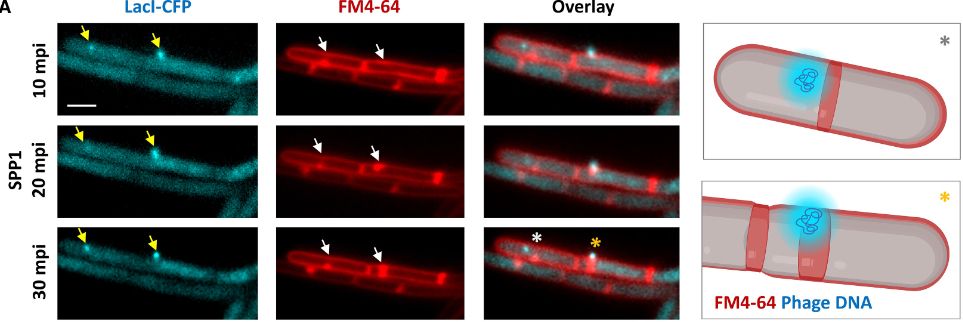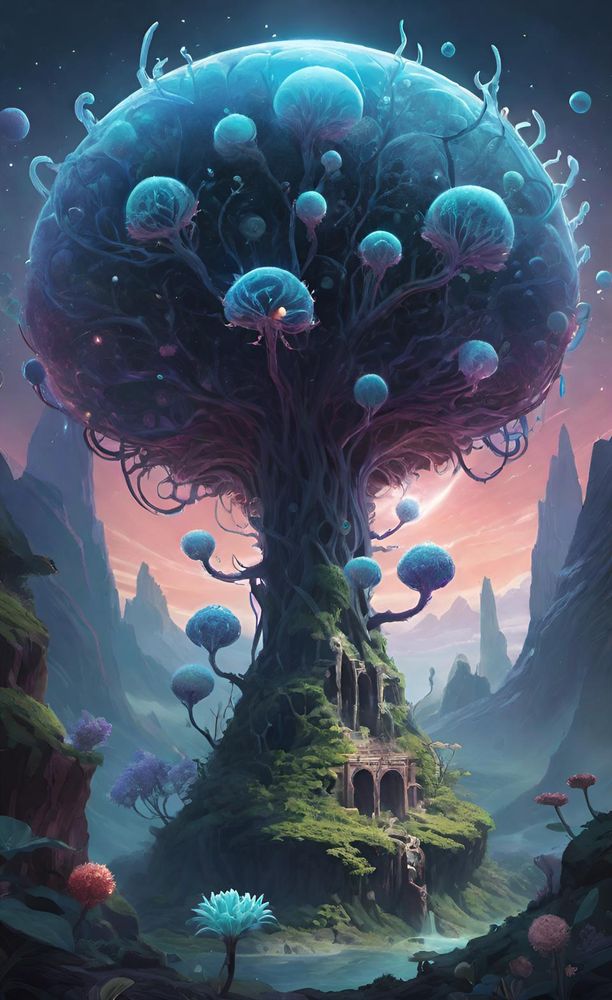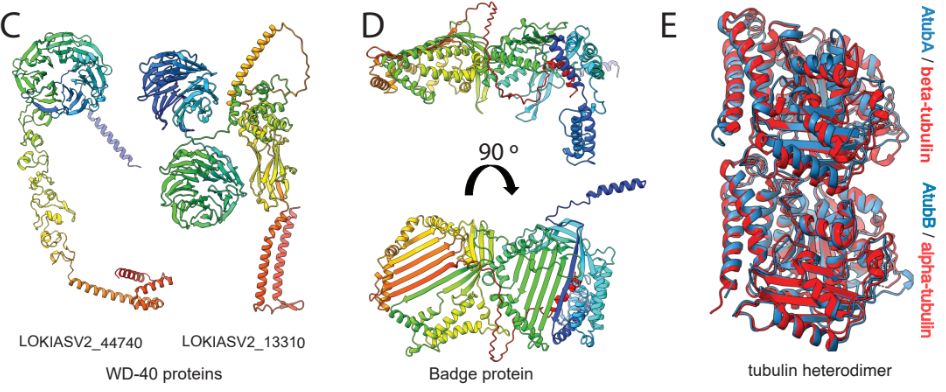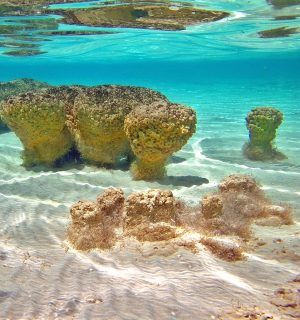Great stuff @joshuamhardy.bsky.social ! Congratulations.
29.09.2025 03:07 — 👍 0 🔁 0 💬 0 📌 0

A Protein Antibiotic Inhibits the BAM Complex to Kill Without Cell Entry
Many antibiotics are ineffective against Gram-negative pathogens such as Pseudomonas aeruginosa because they cannot penetrate the bacterial outer membrane. Here, we show that protein antibiotics calle...
This is an amazing paper led by the Grinter lab on bacterial protein antibiotics called pyocins and the mechanism by which they inhibit the BAM outer membrane complex. @rhyswg.bsky.social, @knottrna.bsky.social, @debnathghosal.bsky.social, @doylemt1.bsky.social, @fabianmunder.bsky.social
20.09.2025 08:46 — 👍 38 🔁 9 💬 0 📌 0
Incredible!
13.09.2025 05:13 — 👍 1 🔁 0 💬 0 📌 0

We recently discovered a brand-new (and unique!) anti-phage defense system in bacteria. Check out this Pursuit article from @Melbourne University featuring our recent work. Terrific effort from our PhD student Somavally!
lnkd.in/geXUApmK
10.09.2025 14:23 — 👍 8 🔁 2 💬 1 📌 1

3 months, 3 thesis orations: a hat-trick moment for the lab!! 🎓🥳.
This time, Bindusmita in the spotlight! ✨ She delivered a fantastic thesis oration, packed with fascinating data and insights 🦠 ❄️ 🔬. It has been an absolute joy mentoring her. Huge congratulations @bindusmitapaul.bsky.social
02.09.2025 12:41 — 👍 7 🔁 0 💬 1 📌 0
Super cool work! Congratulations!
20.08.2025 13:22 — 👍 1 🔁 0 💬 1 📌 0

Our collaborative work on the T9SS is just out in Nature Communications! Fantastic work led by Dhana Gorasia and Eric Hanssen. This paper reveals the structure of the T9SS outer membrane PorKN ring complex and mechanistic insights into protein secretion. www.nature.com/articles/s41...
20.08.2025 13:21 — 👍 20 🔁 3 💬 1 📌 0
Terrific news! Congratulations
07.08.2025 12:01 — 👍 1 🔁 0 💬 1 📌 0
Thanks Ariane :-)
03.08.2025 05:14 — 👍 0 🔁 0 💬 0 📌 0
Indeed, thanks
02.08.2025 23:36 — 👍 0 🔁 0 💬 0 📌 0
Wonderful collaboration with Sigal Ben-Yehuda lab! Our PhD student Somavally Dalvi, who just had her superb thesis oration drove the high-resolution imaging part of the project.
@unimelb, @FMDHS, @ccemmp-outreach.bsky.social
02.08.2025 15:01 — 👍 7 🔁 1 💬 0 📌 0

In this system, bacteria detect phage infection through a sensor protein (YjbH) and respond by severing the infected part of the cell via aberrant division. The rest of the cell survives and continues growing happily, essentially, bacterial autotomy!
02.08.2025 15:01 — 👍 17 🔁 2 💬 1 📌 3
Just as doctors may amputate an infected limb to save a patient’s life, or lizards drop their tails to escape predators, despite being single-celled organisms, bacteria can do a similar escape act. How cool is that?
02.08.2025 15:01 — 👍 7 🔁 1 💬 1 📌 0
📣 New paper alert! Just out in Cell Reports! pubmed.ncbi.nlm.nih.gov/40644298/
Thrilled to share that we have discovered a brand-new anti-phage defense system! Bacteria have evolved various defense strategies (CRISPR etc) to counter phage attacks. We found a new one - fascinating and dramatic
⚔️🦠❄️🔬
02.08.2025 15:01 — 👍 151 🔁 53 💬 3 📌 5
Of course! Let’s catch up
01.08.2025 09:19 — 👍 1 🔁 0 💬 0 📌 0
Very interesting work!
01.08.2025 05:07 — 👍 1 🔁 0 💬 1 📌 0
Amazing structure and insights! Congratulations.
01.08.2025 01:05 — 👍 1 🔁 0 💬 1 📌 0

“Revolutionary Science Comes from Unexpected Angles”
Thoughts from our own Tom Rapoport on the role of basic science in curing disease. magazine.hms.harvard.edu/articles/rev...
29.07.2025 16:00 — 👍 41 🔁 28 💬 2 📌 1
Amazing insights!
29.07.2025 07:02 — 👍 1 🔁 0 💬 0 📌 0

Great team of grad students and post docs and led together with an awesome group of PIs @debnathghosal.bsky.social @kmichie.bsky.social @iduggin.bsky.social. As something different here be a cool AI-generated artistic impression of our #Asgards hanging in their microbial mat 'ancient home'....⚔️
28.07.2025 01:36 — 👍 3 🔁 1 💬 0 📌 0
Thanks much Harry!
27.07.2025 22:57 — 👍 0 🔁 0 💬 0 📌 0
Thanks Martin @pilhoferlab.bsky.social
27.07.2025 18:04 — 👍 0 🔁 0 💬 0 📌 0
Massive Team effort! Thanks to all for bringing this together! @brendanburns999.bsky.social
@iduggin.bsky.social @kmichie.bsky.social
@snobsi.bsky.social , @juliameltzer.bsky.social, @xabivc.bsky.social, @tiltedscientist.bsky.social @bindusmitapaul.bsky.social @dcshepherd.bsky.social and others.
25.07.2025 13:29 — 👍 5 🔁 0 💬 0 📌 0
This offers the first glimpse into how complex eukaryotic cells may have evolved from archaeal ancestors — one of the biggest open questions in biology.
As @brendanburns999.bsky.social says: “Stromatolites may represent the ‘microbial village’ that helped raise a eukaryote.” Exciting times ahead!
25.07.2025 13:29 — 👍 0 🔁 0 💬 1 📌 0
Popular theory of eukaryogenesis suggests an Asgard archaeon once engulfed a bacterium, giving rise to the first eukaryotic cell. The bacterium became the mitochondrion. We show direct physical interaction between an Asgard archaeon and a bacterium via nanotubes! Maybe that's how it all started? 👀
25.07.2025 13:29 — 👍 6 🔁 1 💬 1 📌 0
Our CryoET imaging revealed N. marumarumayae possesses unique cell features that appear to reflect their ancestry as progenitors for the earliest eukaryotic cells. ❄️🦠 🔬
25.07.2025 13:29 — 👍 3 🔁 0 💬 1 📌 0

Did we see any secrets of eukaryotic life in these organisms? Extensive genomic analysis revealed metabolic capacities and many eukaryotic signature proteins, including ESCRTs, Sec23/24-like proteins etc and some completely novel folds!
25.07.2025 13:29 — 👍 1 🔁 0 💬 1 📌 0
“Nerearchaeum” in Greek means 'Old Man of the Sea' and “marumarumayae”, derived from the Indigenous language of the Malgana people of Shark Bay, refers to ‘ancient home’. Nerearchaeum marumarumayae means 'Old Man of the Sea' from the ‘ancient home’! Cool name, right?
25.07.2025 13:29 — 👍 1 🔁 0 💬 1 📌 0

In this study, we report ~ 90% (possibly highest to date!) enrichment of a new Asgard archaeon, “Nerearchaeum marumarumayae”, isolated from a microbial mat in Shark Bay, Australia, similar to what might’ve existed billions of years ago. Just the 4th member enriched from the Asgard superphylum!
25.07.2025 13:29 — 👍 1 🔁 0 💬 1 📌 0
Postdoc || Working on
#BacterialNanotubeBiogenesis|| #cell-cellcommunication ||Try to capture through microscopy, what bacteria usually do in their social life! 🦠🔬
CryoEM of bacterial filaments and eukaryotic cytoskeleton. Postdoc within the Ghosal Lab at University of Melbourne, Australia. Formally at Birkbeck, University of Bristol.
Postdoc in the Ranson & Radford labs in the Astbury Centre Leeds. All things CryoEM & BAM.
Postdoctoral fellow at Rudner Lab @harvardmed | PhD at Badrinarayanan Lab @NCBS_Bangalore
Postdoc at Imperial College
Bacterial conjugation & Cryo-EM
Cell signaling, kinases, MLKL and other zombie proteins. NHMRC Leadership Fellow, Professor and Deputy Director at WEHI, Melbourne. He/him. Views my own
Prof in Microbiology and Immunology at University of Western Ontario. Studying Staph aureus and how it senses and responds to chemical signals from innate immunity.
Dad, Teacher, Artist, Gardener and Scientist.
Ps.
All I post is my personal opinion, in my personal times, using my personal tools, not my employers.
I just really love shapes. I love it when things are shapes. And I love it even more when shapes are things
(Molecular model printer @3dmoleculardesigns.bsky.social, former rodent botherer, perennial cell enjoyer)
antibodies, viruses, cryo-EM -- habitually curious -- BMB graduate student at Caltech
Scientist, avid reader, whisky aficionado. Molecular structure, molecular design, bioproduction. 🤿 Apparently Matthew Lillard looks like me...
Computational biophysics, cell motility, collective motion, soft matter, horses, cats. Associate Prof at Johns Hopkins Physics+Biophysics departments.
Playing with Unseen as Postdoctoral Research Associate Diane lab @AIMI_UTS exploiting molecular interaction of pathogenic bacteria and their predators.
https://scholar.google.com/citations?user=LN2GUkQAAAAJ&hl=en
[He, him.] CMV virologist exploring how viruses
enter cells and other tricky mischief (lately, of the glycoimmune-centric variety). University of Pittsburgh School of Medicine. My posts here are my own speech, not my employer’s. #LoveVirology #Glycotime
Ribosomes and RNA language models.
Professor at UC Berkeley.
https://sites.google.com/berkeley.edu/cate-lab/home
Biologist studying retinal development and regeneration at the University of Kentucky. Books, baking, birds, bourbon.
Bioinformatician and microbiologist at Flinders University in Adelaide. @linsalrob on all your socials
Scientist. Cook. Research Faculty at the University of Michigan. Membrane protein paparazzi. Dining enthusiast. Immigrant.












